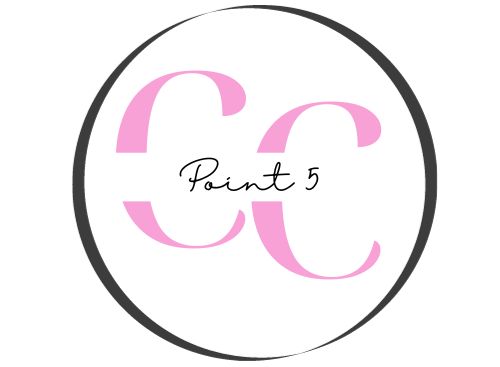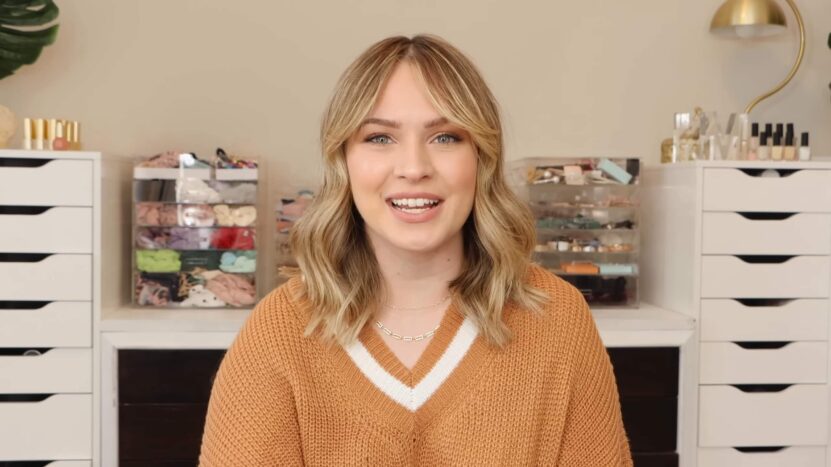Curtain bangs are a stylish and versatile haircut that has gained immense popularity in recent years.
Characterized by their soft, wispy appearance and center parting, these bangs frame the face beautifully, resembling a curtain, hence the name.
Their appeal lies in their ability to suit various face shapes and hair types, making them a go-to choice for many seeking a trendy yet low-maintenance hairstyle.
Preparation
The first step is, of course, preparation.
Face Shape Consideration
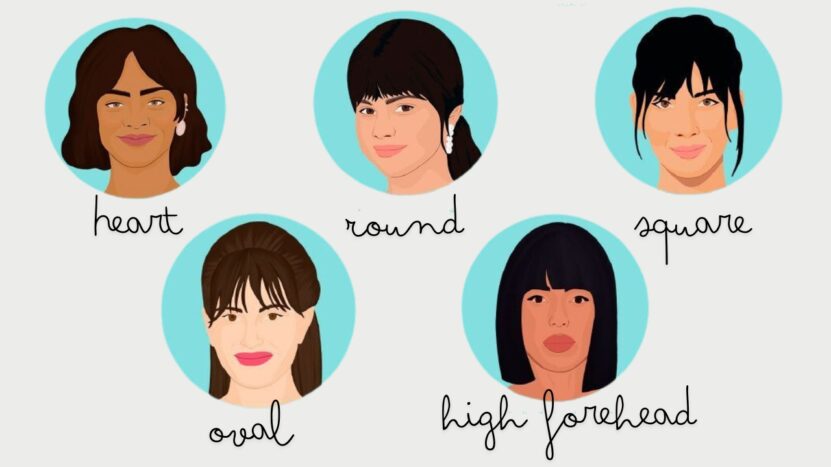
When cutting curtain bangs, it’s essential to tailor the style to the individual’s face shape.
For instance, those with round faces can benefit from longer, face-framing bangs that create the illusion of length, while those with square faces might opt for softer, wispy ends to soften angular features.
Heart-shaped faces often look best with bangs that taper to the jawline, balancing the width of the forehead and the narrowness of the chin.
Oval faces are the most versatile, able to pull off various curtain bang styles effortlessly.
Choosing the Right Tools
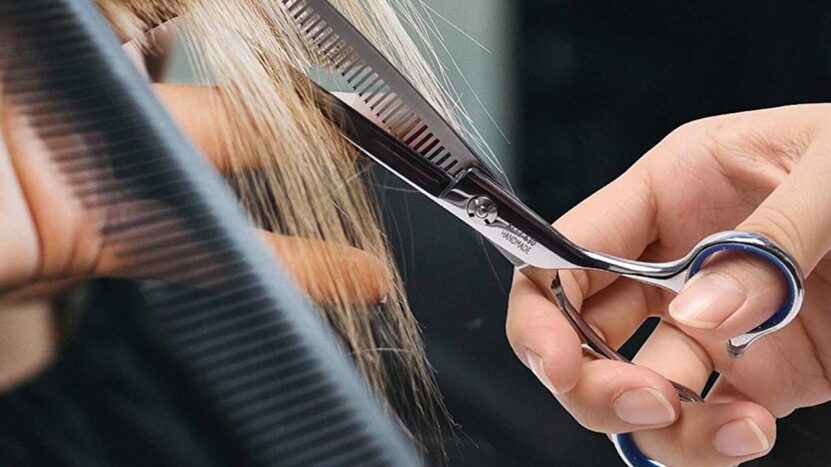
The tools you use can significantly impact the final result of your curtain bangs.
Essential tools include:
- Professional-grade shears
- Thinning shears
- A round brush
- A blow dryer
High-quality shears ensure a clean, precise cut while thinning shears help add texture and blend them seamlessly into the rest of the hair.
A round brush and blow dryer are crucial for styling, helping you achieve the desired shape and volume.
Investing in professional tools not only makes the cutting process easier but also ensures the longevity of your bangs, keeping them looking salon-fresh for longer.
Sectioning the Hair
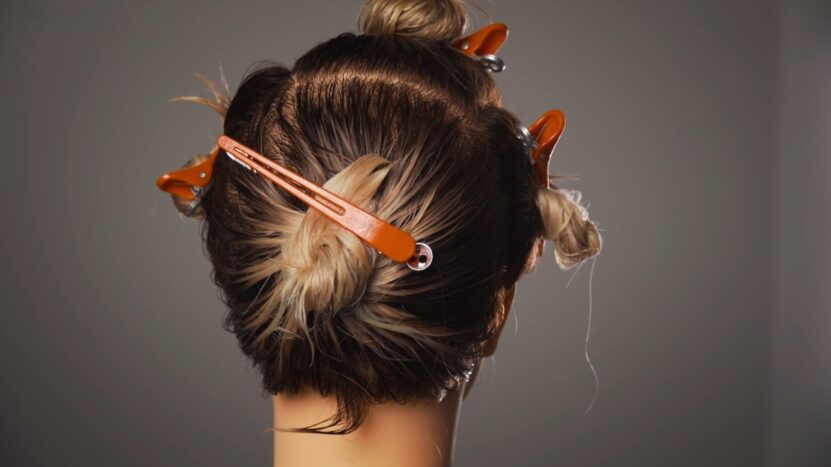
Proper sectioning is a critical step in achieving perfect curtain bangs.
Start by creating a triangle section at the front of the head, using the highest points of the eyebrows as a guide for the base of the triangle.
Ensure the section is symmetrical and that the parting is clean. This helps in maintaining consistency and balance.
Avoid common mistakes such as sectioning too much or too little hair, as this can lead to uneven bangs.
For those with thicker hair, take smaller sections to avoid bulkiness, and for finer hair, larger sections can help add volume.
Correct sectioning lays the foundation for an even and professional-looking cut.
Cutting Techniques
Having a good cutting technique is essential in this case. Let’s discuss how it should be done.
Starting Point

When cutting curtain bangs, it’s advisable to start with longer bangs and gradually trim them to the desired length.
Begin by combing the hair forward and holding it between your fingers at the desired length.
Use a point-cutting technique to trim the ends diagonally, creating a soft, blended look.
After the initial cut, comb them and check for any unevenness, making minor adjustments as needed.
Starting with longer bangs provides the flexibility to refine the length and shape, ensuring a perfect final result.
Texturizing and Blending
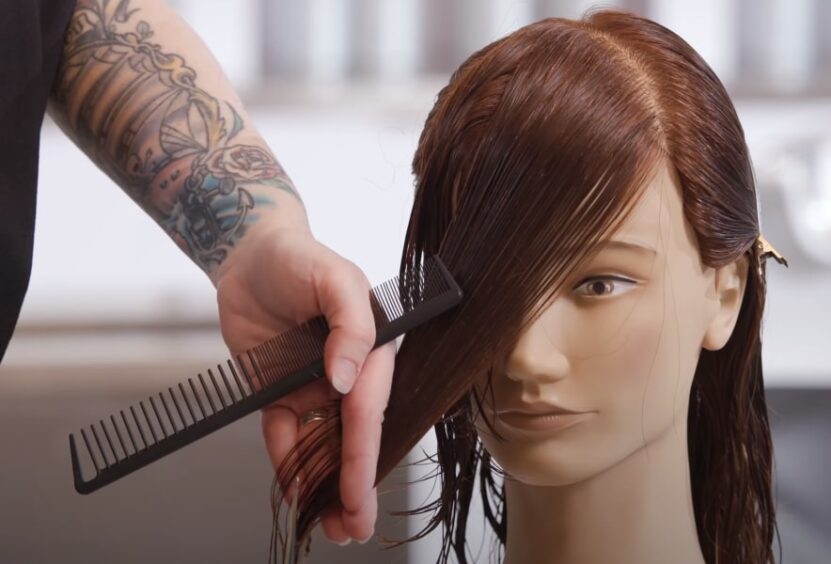
Achieving a natural, wispy look for curtain bangs involves proper texturizing and blending.
Use thinning shears to add texture and remove bulk, working in small sections to avoid over-thinning.
The goal is to create a seamless transition between the bangs and the rest of the hair.
Blend the bangs diagonally and point-cutting the ends to soften the edges.
For a more natural look, consider the hair’s natural movement and texture, adjusting your techniques accordingly.
Considering Hair Texture
Different hair textures require specific cutting techniques to achieve the best results.
For curly hair, it’s crucial to consider shrinkage and cut the bangs slightly longer to account for the curls’ bounce.
Blow-drying curly hair before cutting can help stretch the curls and provide a more accurate length measurement.
Wavy hair benefits from a mix of point-cutting and thinning to enhance the natural waves without creating too much volume.
Straight hair can be cut using a more structured approach, focusing on precision and clean lines.
Styling Curtain Bangs
Now, let us talk about styling a little bit.
Blow-Drying Techniques

Blow-drying is an essential step in styling curtain bangs to achieve the desired shape and volume.
Use a round brush to lift the roots and curl the bangs slightly under, creating a soft, face-framing effect.
Blow-dry the bangs in the opposite direction of their natural fall initially to add volume, then finish by directing the airflow downwards for a smooth finish.
Mastering these techniques ensures they will look polished and voluminous.
Daily Maintenance
Maintaining curtain bangs between washes involves a few simple steps to keep them looking fresh.
Use dry shampoo to absorb excess oil and add volume at the roots.
For quick touch-ups, a small amount of texturizing spray can help revive the original shape and movement.
When re-styling, use a round brush and blow dryer to refresh the bangs, focusing on the roots to lift and the ends to smooth.
Adjusting these methods to suit different hair textures ensures they will stay in their place and look their best throughout the day.
Common Mistakes to Avoid
The final thing we want to talk about is the mistakes you need to avoid.
Cutting Too Short Initially
One of the most common mistakes when cutting curtain bangs is starting with a perfect length.
It’s essential to leave the bangs longer initially and trim gradually.
Incremental trimming allows you to achieve the desired look without compromising the bangs’ overall appearance.
Remember, you can always take more off, but you can’t put it back once it’s cut.
Not Blending Properly
Blending is crucial for a seamless transition between the bangs and the rest of the hair.
Blunt cuts can lead to a harsh, disconnected look. Use thinning shears and point-cutting techniques to soften the edges and create a natural blend.
Pay attention to the hair’s natural movement and adjust your cutting angles to ensure the bangs flow smoothly into the hair.
Proper blending enhances the overall look and ensures they complement the hairstyle.
Ignoring Hair Texture
Failing to consider natural hair texture can lead to disappointing results.
Different textures require specific cutting and styling techniques.
For instance, curly hair should be cut slightly longer to account for shrinkage, while straight hair needs precision and clean lines.
Adapting your methods to suit the hair texture ensures the curtain bangs look flattering and blend seamlessly.
Growing Out Curtain Bangs
Transitioning from curtain bangs to longer hair requires patience and strategic styling.
As the bangs grow, consider using them in different hairstyles, such as side-swept looks or adding them into braids and updos.
Use accessories like headbands, clips, or bobby pins to manage awkward stages and keep the hair in place.
Regular trims help maintain the shape and prevent split ends, ensuring the growing-out process is smooth and manageable.
With the right approach, you can transition from bangs to longer hair without compromising your style.
